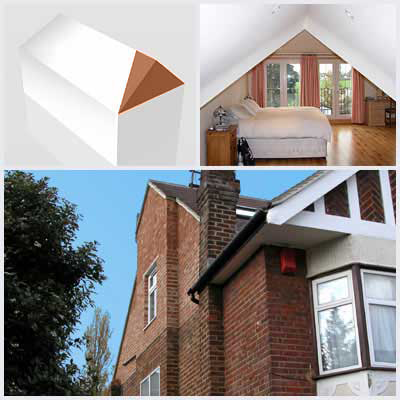Loft conversion in Birmingham Small Heath
Posted on 26/06/2020 3:39:24 PM

Loft Conversion in Birmingham Small Heath B10
The mansard style roof has a very particular style, but one which adds a great deal of scope for your bristol loft conversion. It is most popular for adding a further level onto a house with out any stone work on the exterior of the building. However, this is not their only use and many mansard style bristol loft conversions are used to conceal central heating systems and boilers, whilst they can be made more aesthetically pleasing by using a dormer style window. Planning permission is also required for these conversions. Mansard conversions are usually used for bigger, more archaic houses which naturally have flat roofs. Birmingham Small Heath
A single ‘room in the roof’ loft conversion, with a floor area of 18 square metres, without a dormer is the most affordable option. Construction costs for a room in the roof can start at £30,000 excluding vat and fees. This cost would normally cover new floor reinforcement, insulation, staircase, electrics, two or three roof lights, heating, fire safety measures and lighting. Birmingham Small Heath
loft Conversion in Birmingham Small Heath B10

Insulating a Loft Conversion Birmingham Small Heath B10
If the loft room height is almost tall enough as it is, another solution for maximising the height is to use thinner layers of insulation during the construction of the loft conversion. Traditional methods for insulating a loft conversion can be around 25cm thick, something of a space-stealer when measurements are tight. However, modern techniques provide thinner but very effective alternatives for maximising space and thermal efficiency at the same time.
The conversion of an existing loft space comes with a range of insulation challenges that must be considered when specifying insulating materials, such as the safety requirements of additional loads being laden on existing ceiling joists. Another consideration is to ensure loft conversions comply with the energy efficiency sections of building regulations.
You may want to include a bath or shower room in your loft conversion. The best place for this is generally directly above your existing bathroom. This should ensure you can connect into the existing drainage and water supplies without the need for excessive pipework. Any bath or shower room will also need to be fitted with an extractor fan to improve ventilation. We recommend you decide on the location of any bathrooms at an early stage in your space planning process.
A good loft conversion contractor will ensure your new space is properly insulated and that there is adequate ventilation to prevent the build-up of condensation which can lead to mould and mildew. Close attention should be paid to bathrooms, which are weak points for condensation, and the roof.
Loft conversions usually take between 4 to 7 weeks to complete. The first two weeks all the work is being done from outside or within the roof space. On weeks 3 and 4 the floor joists and the loft floor and insulation are completed, while the ventilation and stud walls are still a work in progress. On weeks 5 and 6 the rest of the house is opened to the loft as the staircase is now fully fitted and the stairway is made good by installing the handrails and bannisters. The last week any plastering , carpentry work is completed and all the plumbing is installed and tested successfully.
This is a page on Loft conversion in Birmingham Small Heath